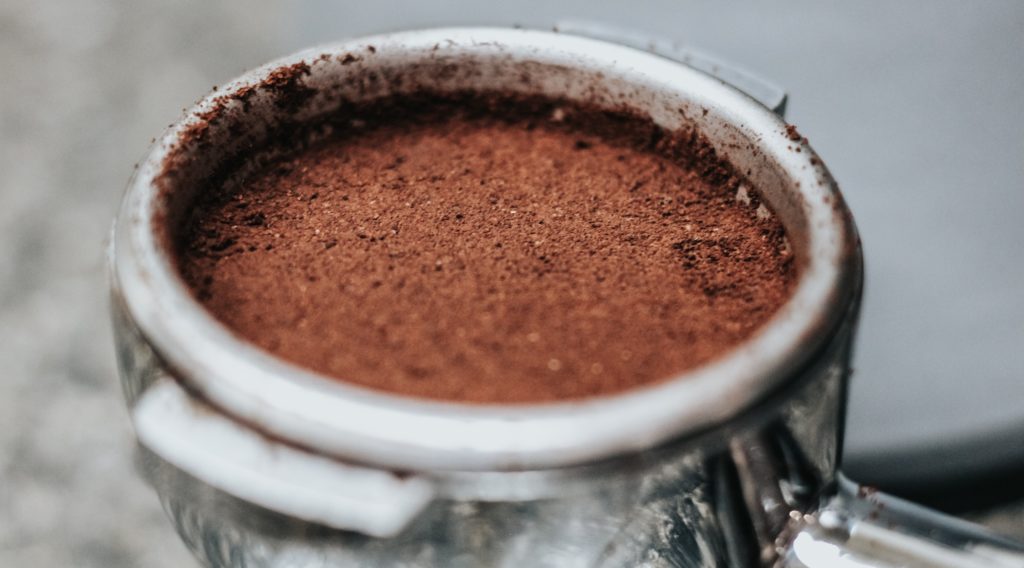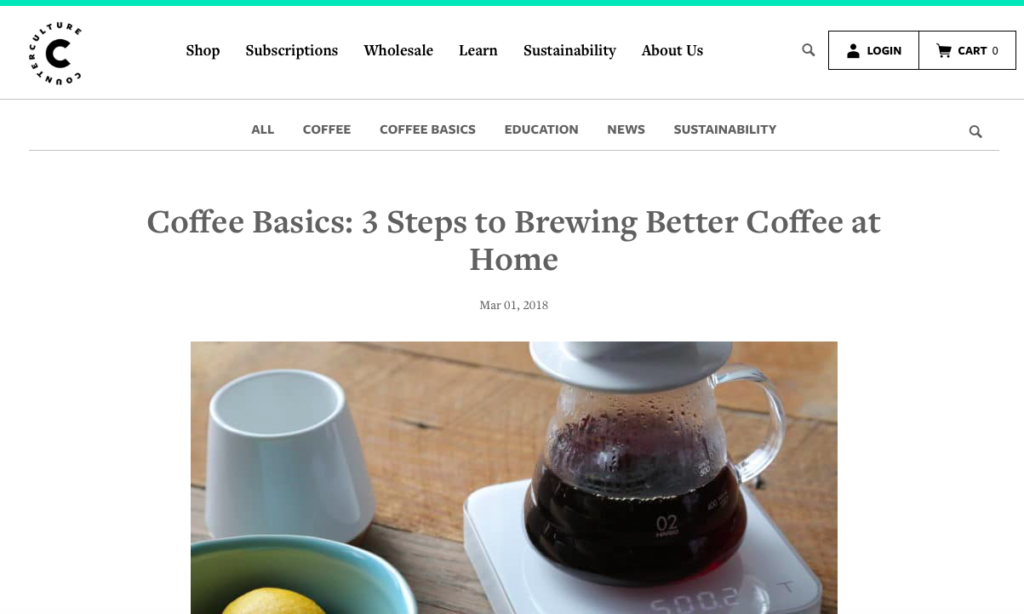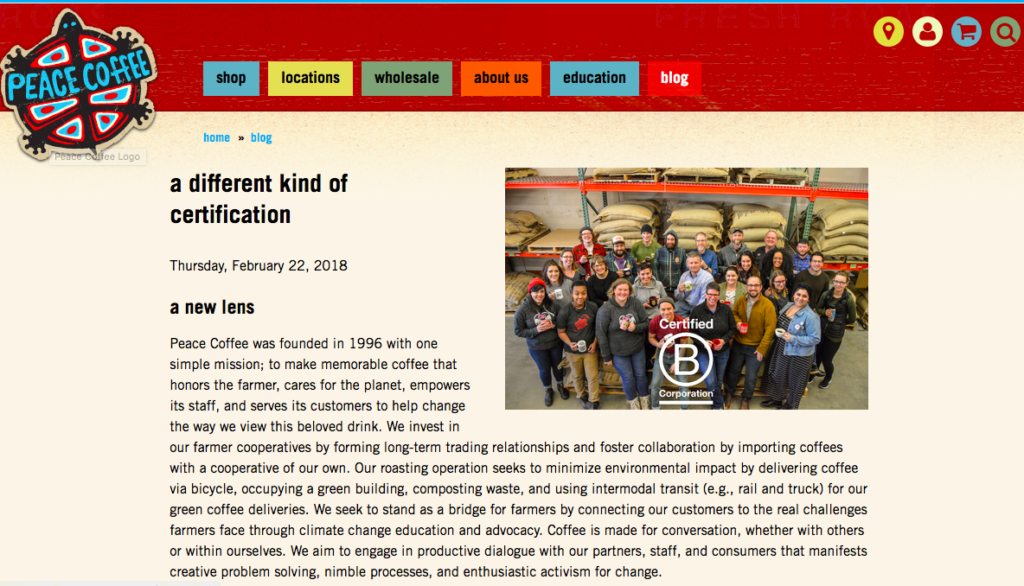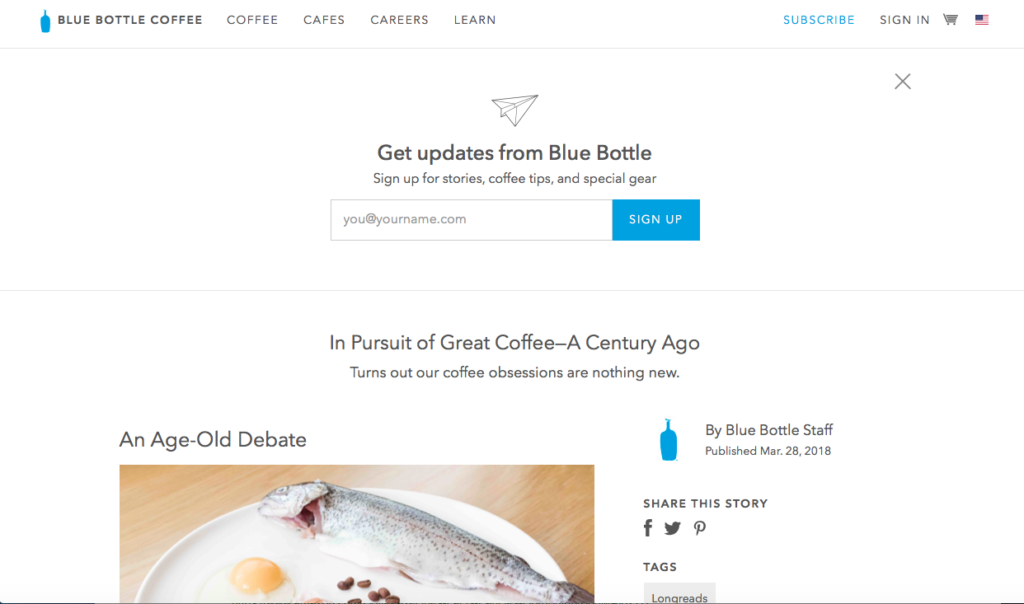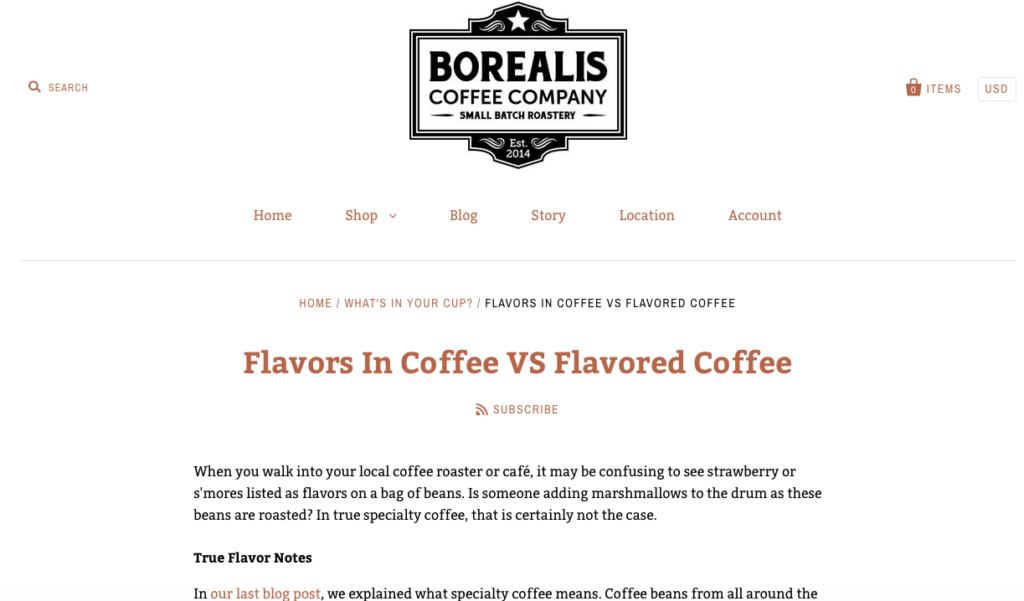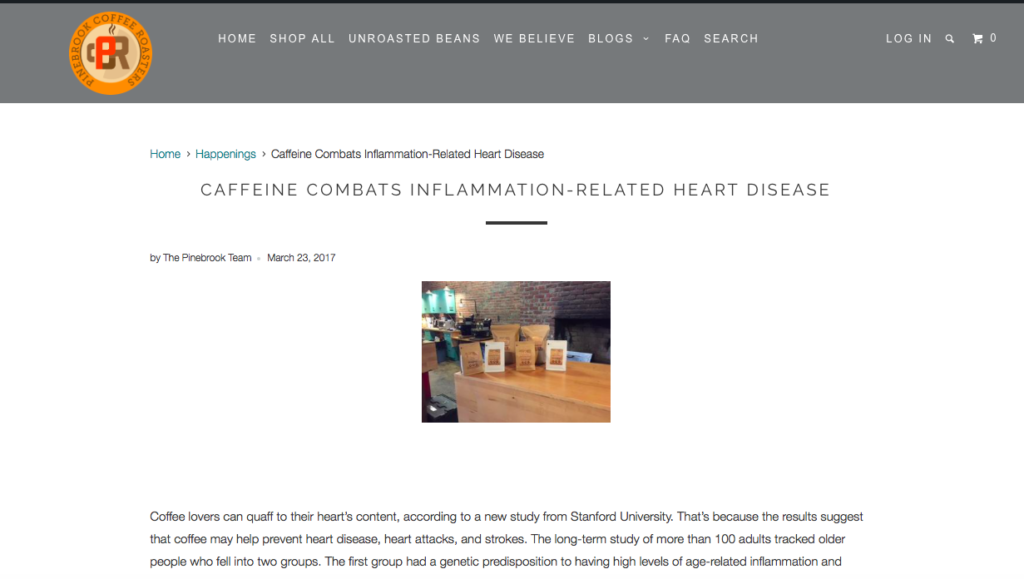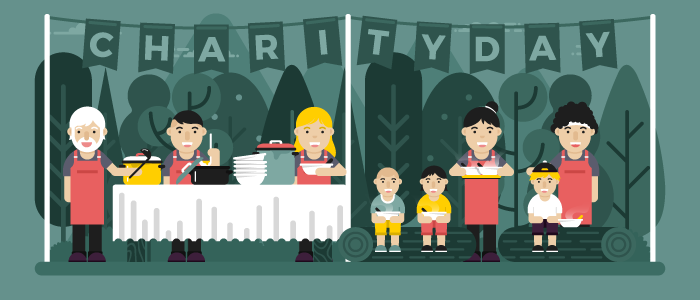Try these seven blog post ideas to give your coffee shop marketing plan some buzz
I drank coffee for a long time before I understood what the “buzz” was about. Coffee was utilitarian. In fact, one could argue that it was the coffee flavor I liked more so than an actual cup of coffee. You know, lots of milk and sugar or mochas.
Gradually, the realization that coffee itself had flavors changed the way I approached the beverage. I worked in the coffee industry for quite some time, in some wonderful independent shops, some not so wonderful independent shops, and even (briefly) in a large coffee corporation. In that time I had the good fortune to collaborate on a coffee shop marketing plan for one of the shops I worked for.
What I realized then, and even more now that I work in marketing, is that there are plenty of ways to succeed in marketing a coffee shop. There are, however, some approaches to a coffee shop marketing plan that give you a much better ROI.
For a big business with plenty of capital, it’s easy enough to throw money into magazine ads, promoted social media posts, pay per click advertising, or even billboards and television ads. Smaller, independent coffee shops don’t usually have those options, at least not at the same financial level. That’s why it’s especially important to focus on a marketing strategy that you know works.
We can take a step further, though. There is one marketing strategy that not only works, but actually gets less expensive the longer you use it: blog posts. When you use good keywords (more on those in a minute), that bit of marketing could help customers find your coffee shop for months or even years to come, and you only pay for the blog post once, whether that’s in the time you take to write it or paying someone else to do it for you. (Which, of course, we’d be happy to do, because that’s our specialty.)
Here’s an example: Did you know there are, as of this writing, 880 people in the U.S. each month looking for the “best coffee in Atlanta” on Google? There are 4,400 people looking for “Nashville coffee shops” and if you want to narrow the parameters to your specific geographic location, there are 40 people each month in Austin, Texas looking for your shop if you sell “fair trade coffee” (or over 8,800 people if you sell beans online and want to reach the whole country).
So how does this fit into a coffee shop marketing plan?
We’ll look at some real life examples in a minute, but first, here is a ristretto version of how keywords, search engine optimization, your blog, and your customers all blend.
A keyword or keyword phrase is what you type into the Google search bar when you look something up. For instance, if I’ve done a decent job writing, you may be reading this right now because you googled “coffee shop marketing plan.” That’s what your customers or soon-to-be customers are doing. They’re heading to a conference and want to find the “best coffee in Atlanta” or they are interested in ordering “fair trade coffee” online from a roaster.
Now imagine you just wrote a blog post about that. How many people did you just reach? Quite a few probably.
These keywords, chosen strategically, then skillfully tucked into your blog posts, are like your scales – you can still make coffee without them ( or write a blog without keywords), but there’s a lot of guesswork involved, it won’t be very consistent, and you probably won’t get the results you want.
What does this look like in real life, though? Here are some examples of coffee shops and roasters (both big name and boutique) who are making their blogs a central part of their marketing plan, as well as what you can learn from them.
Better yet, with each example, I’m also including a keyword phrase (in red) with a possible title and a call to action (because blogs are fun, but you still want to invite people to enjoy your product). The keyword phrases are researched and competitive, meaning if you use them well, people will find you. Feel free to change the titles and call to action, but the keywords have to remain as is. As far as Google is concerned, “coffee shop marketing plan” and “marketing plan for a coffee shop” are two completely different drinks – kind of like a macchiato and a caramel macchiato, if you know what I mean. ;)
7 Blog ideas for your coffee shop marketing plan
1. Be socially conscious
Title: Is your Caffeine Green? How to Enjoy Environmentally Friendly Coffee
Call to Action: There’s more than one way to bring environmentally friendly coffee into your daily routine. And if you bring your own mug, we’ll even reward you with a phat discount!
Bard Coffee, in Portland, Maine, doesn’t just make a great cup of coffee (I’ve been there – they really do kick ass). They do it from a place of love, dedication, and with a firm grasp on the responsibility they have to the environment. But it’s not just the right thing to do; it’s also smart marketing. Sharing that work on their blog encourages that same commitment in the community, and it also draws in people who love a good cup of coffee, but want their spending to support environmentally friendly coffee shops.
2. Share your knowledge
Title: Learn the Best Way to Brew Coffee at Home
Call to Action: There are hundreds of ways to brew coffee at home, but discovering the best way to brew coffee, in three simple steps, could change the way you start your day. Come grab a bag of our freshly roasted beans and try these steps at home for a life-changing experience.
Counter Culture is one of the most well-known names in specialty coffee, and they have a history of working to educate customers and the coffee community on the full spectrum of coffee production and consumption. Freely sharing this knowledge positions Counter Culture as an expert (which they are), and also sets them up as THE roaster you want to buy coffee from. They also have a really nice, subtle call to action at the end of this blog post, inviting readers in for a hands-on brewing class.
3. Be accountable
Title: What does it mean to be a “responsible coffee” company
Call to Action: There’s more to running a responsible coffee company than selling fair trade coffee. We are committed to strengthening the fabric of our community in the most ethical ways we can, from how our coffee is grown and produced to ensuring our employees make a fair, livable wage. Won’t you join us for a drink?
Peace Coffee, in Minneapolis, MN, is a “different kind” of coffee company. They are, understandably, proud of their certification as a B Corporation. In an age when consumers are hyper-conscious of the businesses they support, Peace Coffee stands out as a place you could feel good about buying your coffee.
4. Take a look back
Title: 5 Old Coffee Recipes That We Tried, So You Don’t Have To
Call to Action: Fortunately, coffee has come a long way since these old coffee recipes were written down. New recipes bring out the inherent flavors in each bean. Join us for a single-origin coffee tasting every Thursday.
Blue Bottle Coffee went back in time to share coffee recipes from the turn of the 20th century. It’s an interesting way to bring an appreciation for the craft of the perfectly brewed coffee of today. Perhaps you have some equally unique history to share with your audience?
5. Take a look forward
Title: Specialty Coffee Flavors: What’s Really in your Bean
Call to Action: When it comes to true specialty coffee, flavors are inherent in the bean; you don’t have to add them in. Learn more about coffee tasting. Subscribe to our blog today.
Borealis Coffee Company, in Riverside, Rhode Island, doesn’t have an extensive blog, but they do tackle one of the big points of confusion for a lot of consumers: flavored coffee vs. coffee flavors. Sharing information about your craft can both educate and excite your customers. It encourages them to delve into your world, where you can open their pallette to new experiences and sensations.
6. Fight the good fight
Title: Why is Coffee Bitter? (Hint: It Shouldn’t Be)
Call to Action: Why is coffee bitter? While some coffee may have a bitter reputation, carefully roasted, lovingly prepared coffee should bring exciting flavor sensations to your mouth. Coffee can be sweet, spicy, chocolatey, nutty, or bright (among many other flavor notes). Don’t let bad coffee get you down. Join us every morning for the best in freshly brewed perfection.
Victrola Coffee Roasters, in Seattle, Washington knows that their customers (in this case, shops that use their beans) may sometimes fight an uphill battle. With the preponderance of stale, burnt coffee in the world it may be hard to convince some of your customers or would-be customers to take a chance on your product. Your blog is one place you can start that discussion.
7. Science to the rescue
Title: Is Coffee Healthy? Some Good News for your Morning Brews
Call to Action: A recent study took on the question of coffee and health. So is coffee healthy? Can you drink it without worry? We have some good news to go along with your caffeine buzz. Come have a cup and we’ll tell you all about it.
I had to go back a bit to pull this blog post from Pinebrook Coffee Roasters, in White Plains, New York, but it’s for an important point. Customers are more concerned about health than ever. It’s not enough to tell someone that coffee isn’t bad for them, you have to show them that it may be beneficial. Don’t be afraid to bring science to your blog. After all, coffee is an art, but it’s also a science.
Don’t let your coffee shop marketing plan rely entirely on newspaper ads and your Facebook page. Those are both great options, of course, but writing a blog gives you clout. It helps you stand out in a world saturated with good and not-so-good coffee shops and roasters. And remember, it doesn’t have to be perfect to be great. Coffee is a personal experience. Your blog should be, too.



